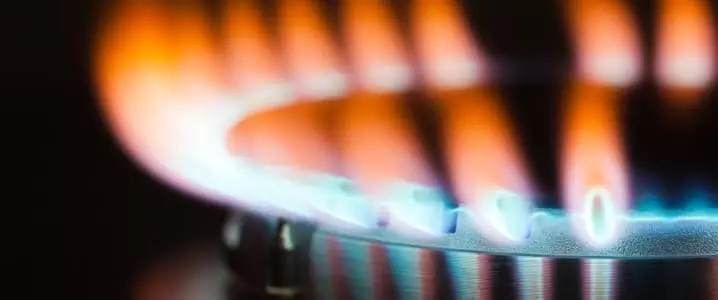Top Stories Tamfitronics
By Irina Slav – Nov 01, 2024, 6:00 PM CDT
- Despite high storage levels, European gas prices remain volatile due to supply disruptions.
- The EU’s dependence on Russian gas continues, with alternative sources from the U.S. and Azerbaijan facing limitations in meeting Europe’s total demand.
- Experts: Europe’s gas supply outlook might worsen in 2025 compared to 2024.

A year ago, European politicians declared the gas crisis from the near-complete halt of Russian supplies was over. The EU had turned to alternative natural gas suppliers, assuring there would be enough to prevent shortages and steep prices. These assurances now appear premature.
Last week, European benchmark gas prices hit the highest in a year on the news of a production outage in Norway. On Friday, the Dutch Title Transfer Facility hit 43.68 euros per MWh, which was the highest since December 2023. It seems the future holds more price spikes—because that spike occurred despite full European gas storage caverns ahead of peak demand season.
It all started innocently enough. On Tuesday, Norway’s state major Equinor suspended production at one of its platforms due to a smoke alert. Norway is the European Union’s largest natural gas supplier at the moment. It supplies some 30% of the EU’s gas. When it reported the incident, Equinor noted it would not interfere with its export commitments. Yet gas prices spiked.
It’s all about supply security, of course. It was supply security that drove European gas buyers to rush to build a reserve early on in the year and make sure there was enough in storage before winter season began. Right now, gas in storage in the EU is at 95%, which is exemplary work—only it won’t save the bloc from shortages if the winter turns out to be colder than the last two.
Related: Slovakia State Firm Denies EU Gas Deal With Azerbaijan Is Imminent
Early forecasts suggest this is exactly what could happen, yet again highlighting the fact that the only reason the EU made it through winter 2022-23 was luck, which brought the continent a milder-than-usual winter. Luck is not something to lean on when it comes to the security of energy supply—which is why Russia is the EU’s second-largest supplier of natural gas, sanctions and all.
The EU admitted as much itself in its State of the Energy Union Report, released in September. “The share of Russian gas in EU imports dropped from 45% in 2021 to 18% by June 2024, while imports from trusted partners like Norway and the US have increased,” the EU wrote, but no matter how much it tries to highlight the shift to Norwegian and U.S. gas, the fact is that Russia supplies more gas to Europe than the United States—regardless of how much EU politicians are trying to stifle these supplies.
The fact this continues is simple proof that Europe still needs a lot of gas despite its voluntary demand destruction since 2022. That demand destruction, per the State of the Energy Union Report, stood at 138 billion cu m between August 2022 and May 2024. It is not something to be proud of—not when businesses are shutting down because of prohibitive energy prices. Yet the EU has done its best to put a positive spin on the demand destruction story, presenting it as a success in reducing the bloc’s dependence on Russian natural gas.
Focusing on that, however, those doing the spin seem to have forgotten that alternative supply is far from guaranteed. The recent price spikes are a rough reminder of that. The Biden “pause” on new LNG export terminal approvals was struck down in court, but it will still be a while before all the planned new capacity gets built. In fact, it will be years. And Europe needs the gas now—because Ukraine said it would not renew its gas transit deal with Russia, and the Ukrainian pipe is the only one still carrying Russian gas, besides LNG, into the EU.
Bloomberg reported this week that the EU was discussing alternative supplies with Azerbaijan that would replace Russian gas flowing along Ukraine’s pipeline network to Europe—but only partially. “The contract would need to involve a so-called swap agreement between Azerbaijan and Russia because Azerbaijan doesn’t have enough export capacity to replace the existing supplies,” Bloomberg explained.
The news, when it broke, pushed TTF prices down understandably. Yet the decline did not last long, and prices rebounded soon enough. Because demand for natural gas is growing internationally, winter is coming, and the deal with Azerbaijan is not yet finalized.
All these factors “have raised risks that the gas supply outlook for Europe may not be any better in 2025 compared to 2024, but, in fact, could be worse,” HSBC’s head of European oil and gas research, Kim Fustier, told Bloomberg.
Unless the EU finds a complete replacement for Russian gas, it could end the winter with gas storage just 30% full and even higher prices. For context, last winter, the EU emerged from heating season with storage full at 58%, which was quite a comfy level that led to comfy prices. In a worst-case scenario, Europe might even empty its storage caverns to keep the lights on and the heating on—Asia likes LNG, too, and the winter is not normally the optimal season for wind and solar. Europe’s gas problems are far from over.
By Irina Slav for Oilprice.com
More Top Reads From Oilprice.com
- Unexpected Crude, Product Draws Send Oil Prices Up
- OPEC Lifts October Production Ahead of Planned Production Hikes
- New Survey Shows Grim Outlook For Oil Markets
Download The Free Oilprice App Today

Back to homepage
![]()
Irina Slav
Irina is a writer for Oilprice.com with over a decade of experience writing on the oil and gas industry.
More Info
Related posts
Leave a comment




